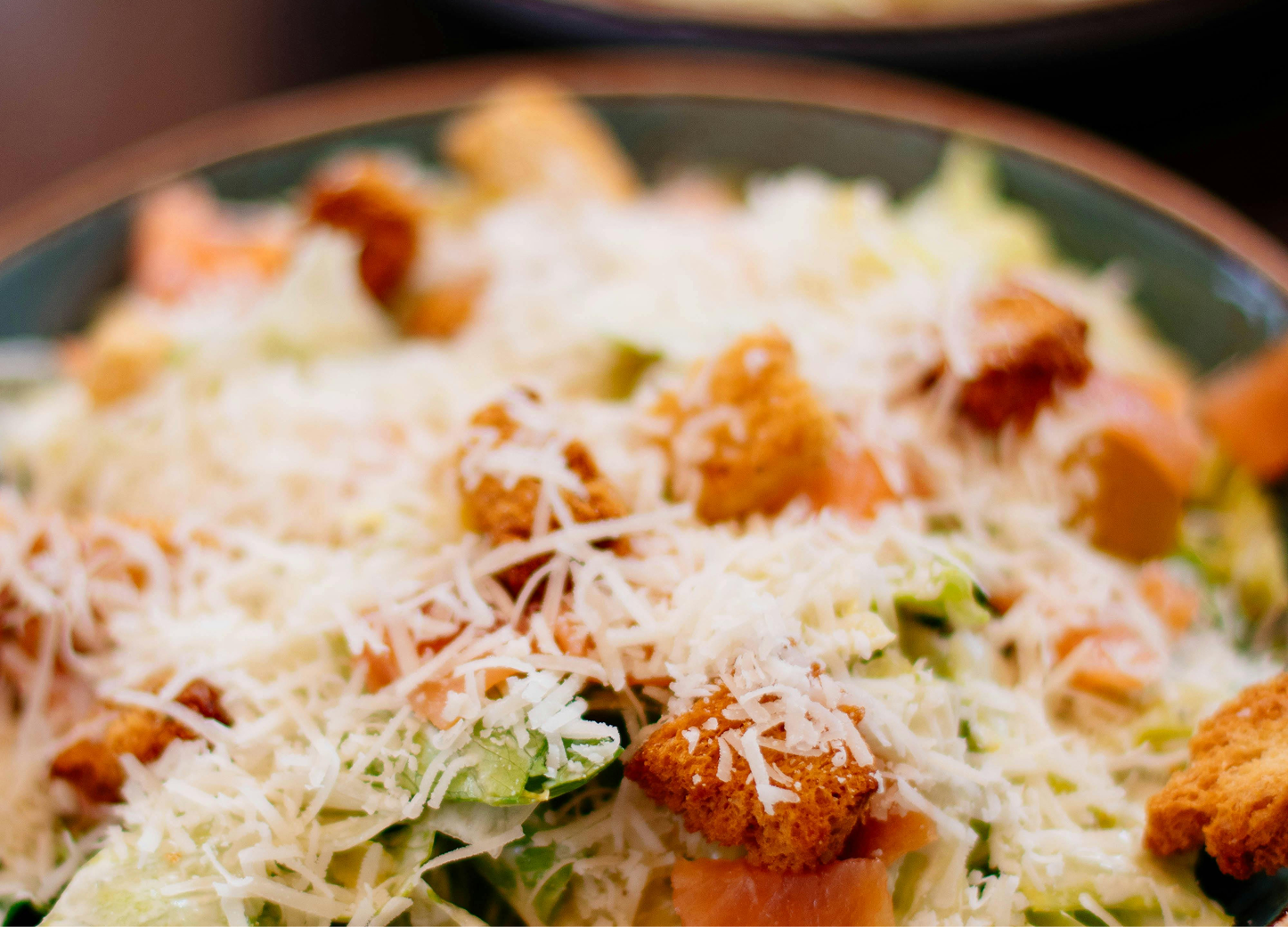There Is No Such Thing As a Bad Caesar Salad
An ode to an appetizer (or main course) that is undeniable
Not all salads are created equal. The basic house salad, with its cherry tomatoes and balsamic vinaigrette, isn’t worth the energy it takes to order it. The blue cheese wedge salads found at steakhouses look decadent, but…well…one shouldn’t have to attack their salad with a fork and knife.
Shareable salads, like a Caprese, are visually pleasing but don’t quite satisfy hunger before the main course the way a Caesar salad does. The Caesar is the alpha dog of all first courses, followed, distantly, by oysters on the half-shell (this is undeniable).
One reason Caesar salads are so popular is that they are very difficult to get wrong, whether the dressing is homemade or store-bought. The flavor profile of a good Caesar is gorgeously simple: savory and zesty, fresh and nutty. There are deep umami undertones, but overall, it’s a bright start to any meal, especially rich pastas and bone-in rib-eyes.
And it’s not just an appetizer. A Caesar salad can be turned into a meal with the addition of grilled chicken or salmon, and even without those, it can be paired with and hold its own against a side order of fries. This is my ideal comfort food, especially when traveling or if I’m unsure about the quality of a restaurant. Surely most kitchens can prepare a Caesar with fries on the side? I’ve eaten in remote places that almost failed to excel at this combo, but in both instances—one spot in the middle of nowhere Arizona, the other outside Bozeman—I ate what I was served and left satisfied.
New York City is one of the great capitals of Caesar salad. Classic examples of this ultimate opening act to any dinner can be found at Balthazar or Carbone in Manhattan, at Rolo’s in Ridgewood, or Diner in Williamsburg. These salads aren’t all carbon copies; some are classic, while others are a bit more adventurous. Is a Caesar with romaine lettuce naturally better than one with kale? I say no. They’re both excellent because there is no such thing as a bad Caesar salad.
It’s true that New York’s 24-hour diner scene is dying, but I ate at a greasy spoon in Park Slope the other day that served me a Caesar on a chilled plate. It was iceberg lettuce swimming in jarred Caesar dressing, topped with breadcrumbs and Parmesan from a can, and you know what? It paired delightfully with my cheeseburger.
What qualifies me to make sweeping generalizations about salads? Only one thing entitles me, and that is I have, by my back-of-the-envelope calculations, eaten roughly 10,000 Caesar salads in my lifetime. I’m here to write clearly: it is the supreme salad. I have eaten a Caes-y, as I sometimes call them, on an Amtrak train, in Paris, and at my favorite old-school steakhouse in Hollywood.
I first learned to love Caesar salad at Red Lobster, which was the restaurant my family would sometimes eat at after church in the ‘80s. If you had asked twelve-year-old me what the fanciest, most expensive restaurant in the world was back then, I wouldn’t have hesitated: Red Lobster. I naturally assumed the sad lobsters sitting in their tanks in the lobby cost as much as our family car, and nothing made me feel as rich as a plate piled high with breaded shrimp, the second most luxurious protein I could imagine.
And so, naturally, I thought Caesar salads were named after Caesar, the emperor of Rome. A salad was, and remains, a standard stop on any Red Lobster journey, which usually started with a basket of warm biscuits. The first time I ate a Caesar salad was revelatory: cold iceberg lettuce, crunchy croutons, tangy Caesar dressing.
It wasn’t until, well, recently, that I learned Caesar salad was invented in Tijuana, Mexico, in 1924, by an Italian restaurant owner. Cesare “Caesar” Cardini invented the dish from mostly pantry items at his restaurant, Caesar, and it became a huge hit, especially among Hollywood movers and shakers crossing the border on weekends to enjoy the nightlife. One early and notable fan of Caesar’s salad was none other than Julia Child.
The salad rose to popularity throughout the 1940s and beyond, and it became a star during the tableside boom of the pre- and post-war years, when diners at hotels and fine dining establishments were treated to servers mixing, carving, and flambéing appetizers and main courses right in front of them on rolling carts.
The preparation of a Caesar salad is appetizing and dramatic. First, the dressing: in an ice-cold bowl, whisk egg yolks, a squeeze of lemon juice, dollops of Dijon mustard, diced garlic, a few dribbles of Worcestershire sauce, mashed anchovies, and a few strong glugs of olive oil until creamy. Then stir in grated Parmesan cheese. Next, toss chopped romaine and croutons, and drizzle the dressing over it all.
It’s perfect. There is no such thing as a bad Caesar salad.






I have one requirement: it must have anchovies as an ingredient. I had my first Caesar salad when I was invited to dinner at the Waldorf Astoria in The City, back in the late-70’s. I was hooked. And I remember the Bloody Mary that I had with it. Thanks for stirring that memory!